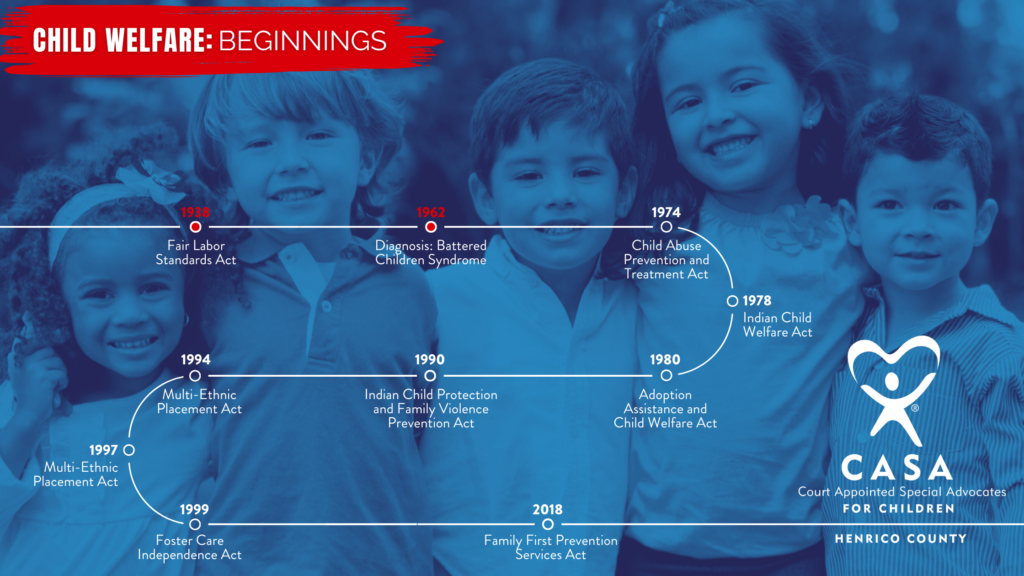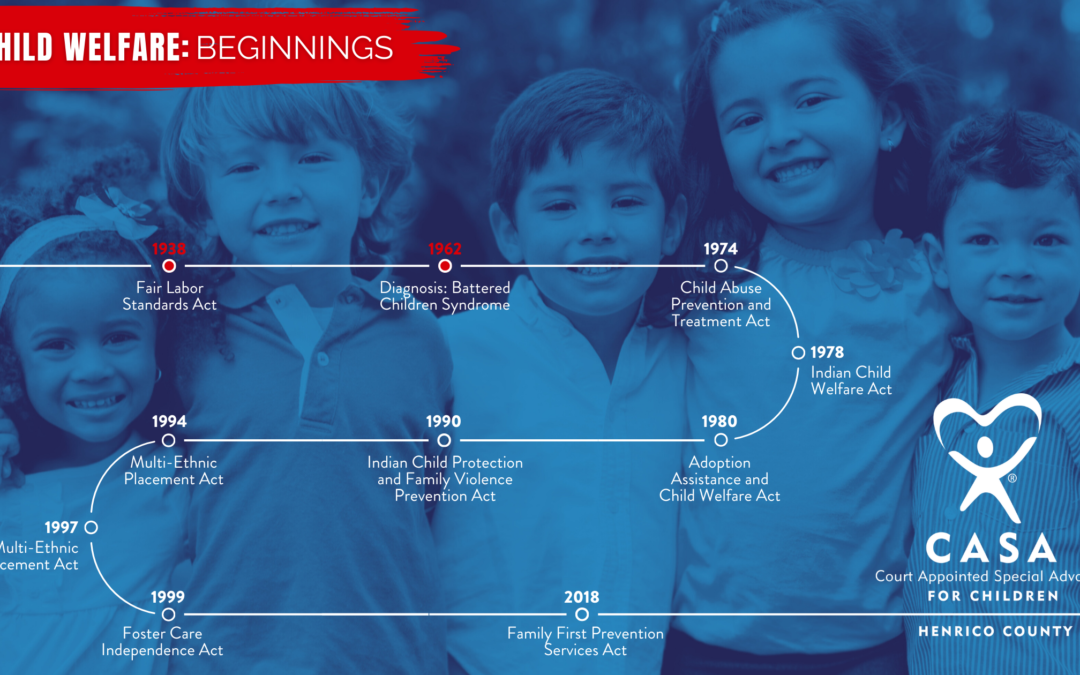
Have you ever wondered how child welfare laws came to be in the United States? It’s a pretty fascinating ride through history, especially when you consider that these laws are relatively new compared to other legal protections we take for granted. In recognition of Child Abuse Prevention Month, our April blog posts will highlight some key moments that paved the way for the protections we have today.
1938
We’ll begin with the Fair Labor Standards Act of 1938. Before this act, children were working in all sorts of dangerous jobs and situations, like factories and mines. The Fair Labor Standards Act intervened to set some ground rules. It established a minimum age for working and put limits on how many hours youth could spend working. By giving children these protections, it ensured they had a safer, healthier childhood and time to pursue an education.
1962
Fast forward to 1962, and we see another milestone. This is when child abuse became recognized as the serious issue that it is! Before this, it was all too common for cases of abuse to go unnoticed or swept under the rug as “family matters.” A shift away from this mindset came with the establishment of “battered children syndrome” as a medical diagnosis. Dr. C. Henry Kempe started diagnosing and documenting cases of abuse, shining a light on the problem and sparking conversations about how to protect kids from harm.
As we move forward in history, you’ll see that not only did doctors begin diagnosing abuse, they became mandatory reporters by law. Certain professionals, like doctors, but also teachers, social workers, and others, must speak up if they suspect a child is being mistreated. Volunteer CASA advocates are also mandated reporters! It gives our society extra sets of eyes on the lookout for signs of trouble, helping to catch child mistreatment early in order to get children the help they need.
The journey of child welfare laws in America has been a bit of a rollercoaster… each step forward has been crucial in making sure our youngest citizens are safe and supported. Check back next week as we move forward through the years to highlight more advances in protecting our children.








